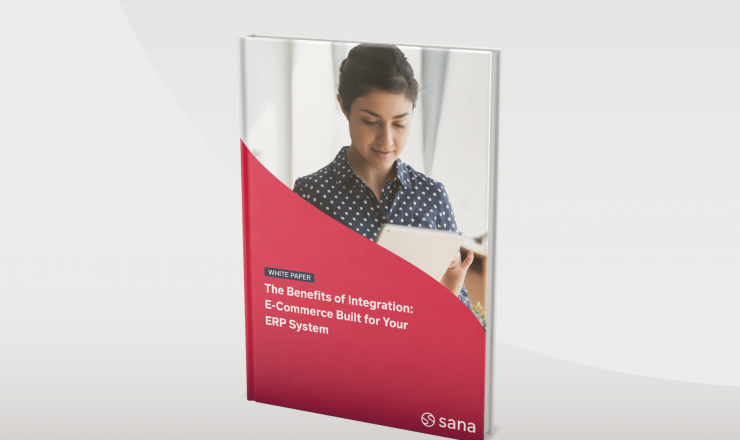

In the world of B2B sales, you have to be able to understand and monitor key e-commerce metrics on your B2B web store. This is not just about the health of your web store, but it concerns the success of your overall business strategy.
There’s one metric that you should be paying more attention to: Cost Per Order or CPO.
What is CPO and why is it so important to your B2B business? How can you calculate cost per order? Most importantly, how can you improve the cost per order in your B2B web store?
Definition of cost per order in B2B
Cost per order (CPO) is simply your total costs over time divided by your total number of orders over that same period. It provides a clear overview of how much each order costs you on average.
Why CPO matters for your B2B web store
First and foremost, knowing your cost per order allows you to invest your business’ money wisely. It helps you determine how much revenue you make from your customer base, and it compares it against the money you had to spend to make that sale. It’s really important that your costs don’t exceed your revenue.
Where do these costs come from? Well, there are many costs associated with the sales process in B2B sales. Due to the complexity and large order value, B2B sales often have more sales stages than B2C. The number of touchpoints with your sales team will drive up the costs.
Then, of course, you have set costs such as the ones that are associated with order fulfillment like shipping and logistics.
When you keep an eye on the CPO, you can:
- Increase cost efficiency across your B2B web store and all other areas of your business
- Use the data to grow your web store and your business
- Identify places where you can reduce your business spend per order
Profitability is top of mind for business leaders across the globe. Cost per order is the best and easiest metric to monitor your journey toward attaining sustainable profits. As ambitious as your business may be, it’s vital to remember that ramping up expenses for expansion incurs costs that must be offset by growing sales. By calculating your CPO, you gain clear visibility into your profit margins.
On the other hand, it’s also important to note when you can increase your costs. You have ultimate control over your business expenses. You can look analytically at where in the process you can reduce your spending and reallocate it to different areas of your business. You could potentially invest in branded packaging or new product offerings or even boosted marketing if you know your CPO average.
What factors influence CPO
There are many different variations in how to calculate the CPO in B2B and much of it will depend on specific aspects of your business. However, as a starting point, look at the following metrics:
Cost of acquiring a customer (CAC): This includes all advertising and marketing expenses, as well as any human labor hours necessary to make the sale.
Order fulfillment costs: Account for warehousing, packaging, logistics, and shipping costs.
Comprehensive CPO: Includes all costs associated with running your B2B business like salaries, labor costs, and utilities.
To get a full understanding of your true CPO, it’s important to consider the following costs:
- Storage fees
- Warehousing and utility expenses
- Picking and packing costs
- Marketing expenses
- Packaging costs
- Shipping costs
- Direct and indirect labor costs
- Cost of goods sold
If there are any additional costs relevant to your B2B web store, make sure you include those variables in your calculation, otherwise it may not be accurate.
How do you calculate cost per order in B2B e-commerce?
It’s time to put all these variables together and come up with a solution. The formula for calculating CPO is quite simple. But keep in mind that this is an average. Some orders will incur more costs, while others will incur less.
To calculate your CPO, you must divide the total sum of your costs by the number of orders fulfilled within a specific period. It should look like this:
Total selling costs / total number of orders = Cost Per Order (CPO)
A good cadence for calculating your CPO is month-over-month. That way, you can get a clear look at your CPO’s trajectory over time.
What is an example of cost per order?
Let’s say you are an auto parts wholesaler, and you want to look back at your success in the past month. You had a good month of sales with 3,750 orders received.
When you look at your outgoing spend, you see that you spent $615,000 in total for the month.
615,000 / 3,750 = 164
In this case, your total average cost per order is $164.
How to lower your cost per order with B2B e-commerce
Now that you have done the calculation, you may have arrived at the conclusion that your CPO is too high and needs to be lowered. This is a common struggle among B2B businesses because the complex nature of the transactions can lead to higher costs.
But how can you lower your web store’s CPO?
Take your CPO calculation from the previous section and create an itemized list of what costs are contributing to the spending.
Now look at the largest contributors. It may help to break down the costs by percentage. That way you can get a close look at where the biggest proportions of resources are being spent.
There are certain costs that you will have little control over due to vendors, such as your shipping costs. But there are definitely line items that can be reduced, and it is within your power to do so.
Costs of labor and efficiency
One of the more variable costs in any B2B business is your labor costs. You know the value your team brings to your company, and nobody wants to diminish that. But what if you could find a way to enable your teams to accomplish more without overstretching them?
B2B e-commerce is the perfect opportunity to free up your team from the constraints of manual processes. This will allow your sales team to use their time more effectively targeting clients who are prime for upsell and cross-sell.
An integrated B2B web store will reduce the number of average human touchpoints a customer needs, reducing your cost per order.
Costs of maintenance and downtime
If your web store is live and available, it should be contributing to your bottom line. If it is experiencing a breakdown or requires maintenance, then it’s taking away from your bottom line.
Those costs can add up faster than you think, making your web store a liability as opposed to an asset. Much of web store maintenance can be traced back to inaccurate data and slow syncing speeds.
When your B2B web store is natively integrated with your existing business software such as your ERP, you eliminate the chance that data will be unaligned and syncing times are reduced to milliseconds. You can keep your CPO low when your web store is contributing to your revenue and not your costs.
Why CPO should be your new favorite metric
Cost per order is among some of the simplest metrics you can use to determine the health of your B2B business and web store. Keeping the ratio of spend and revenue balanced in your favor takes constant attention and care.
However, as mentioned above, it’s possible to give yourself the tools you need to stay ahead of the rising cost threat.

Take your B2B sales efficiency to the next level
Dive into the guide that explains how to enable your teams to meet growth targets.



